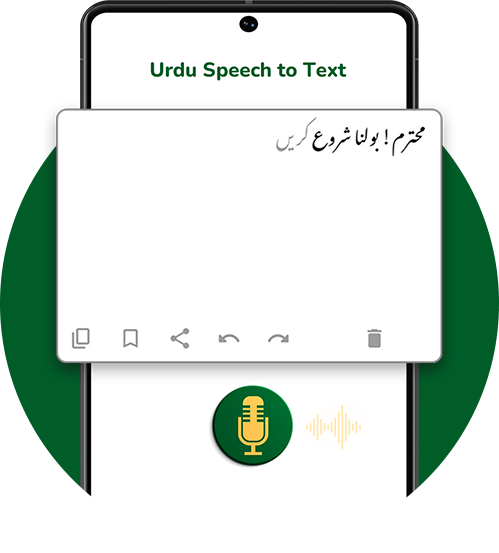Over 200,000 Urdu fonts exist, yet they are based on only a few categories or styles. These styles draw inspiration from traditional Arabic calligraphy, beautifying the texts with a touch of old and modern cultures. Before leaning over the fonts themselves, a designer must understand the origin of a font. Just like color theory with three primary colors giving birth to the palette of millions, we have only a couple primary categories in Urdu fonts. Every font you pick will embody the essence of at least one of these traditional styles. These styles have their origin backing centuries ago. Formally, developed to write religious manuscripts and inscriptions like the Quran, these styles made the foundation for today’s modern font designs.
Categorization of Urdu Script & Typefaces
While Urdu fonts don’t have rigid categories like some other scripts, understanding different ways to group them can be helpful when choosing the right font for your needs. Here’s a deeper dive into how we can define “categories” in Urdu fonts:
Unlike Western fonts with predefined categories like serif, sans-serif, script, etc., Urdu fonts haven’t been formally categorized. This is partly due to the fluidity and artistic nature of the script itself each catering to specific design preferences and needs. It would be hard to discuss all of these; therefore, we are going to discuss only six primary categories of Urdu fonts including:
Each style with its own unique nature defines a different aspect of the traditional Arabic and Persian heritage, so let’s understand their origin, the design itself, and how they impact your text.
Nastaliq

Nastaliq is a calligraphic style that is highly cursive and known for its artistic, flowing curves. The defining aspect of the Nastaliq script is its tilted letterforms. It has a fascinating history that goes back to early 13th-century Persia merging elements of Naskh (clear, angular) and Ta’liq (cursive, hanging) scripts. It is widely used in Iran, Afghanistan, Pakistan, India, and other countries for writing poetry and other form of art. Nastaliq fonts have the appearance of handwritten Urdu calligraphy. There are various sub-categories and substyles derived from this style. Here we look into a few:
| Script Name | Description |
|---|---|
| Shikastah | Highly stylized, expressive script for informal writing and poetry. |
| Taqwim | Designed for clarity and legibility, perfect for calendars and tables. |
| Ghubar | Casual script ideal for everyday writing and notes. |
| Nasta’liq Ijazah | Formal, elegant script used for religious texts and manuscripts. |
| Naskhi | Angular, geometric script suited for technical writing and headings. |
| Diwani Nastaliq | Decorative script adding a touch of elegance to certificates and invitations. |
Furthermore, Nastaliq adds layers of meaning and impact to the text. It connects readers to a lively cultural heritage and gives the artistic expression of the written word. Understanding its influence allows you to make informed choices when using it in your design projects. Some famous Nastaliq fonts are:
Ruqaa

Ruqʿah script, also known as Riqʿah or Riqaa, is a style of Arabic calligraphy characterized mostly by its linear nature and readability. It originated in the 9th century in the Levant region and became widely used for everyday writing due to its legibility and ease of writing. Ruqah script features simplified and compact letter forms compared to other calligraphic styles like Naskh or Thuluth. The script can be identified by angular strokes and letters, which further adds to its simplicity and readability. Ruqah calligraphy, unlike other calligraphy styles, isn’t considered an art form. Instead, it is a practical writing style that is short and simple to read. Here are a few of its modern and traditional interpretations:
| Script Name | Description |
|---|---|
| Ruqaa Imla’i | Simple and straightforward, ideal for everyday writing and quick notes. |
| Ruqaa Muhaqqaq | Balanced and clear, suitable for educational materials and official documents. |
| Geometric Ruqaa | Modern and sleek, perfect for modern signage and branding. |
| Bold Ruqaa | Strong and impactful, ideal for headlines and important statements. |
| Maghrebi Ruqaa | Reflects North African styles with unique letterforms and diacritics. |
| Mashriqi Ruqaa | Eastern influence with delicate variations in letter shaping and spacing. |
Ruqaa script is a simple style and its lack of diacritics enables fast writing and easy reading. Many modern Urdu fonts draw inspiration from it, especially the ones focused on displaying text clearly. Such fonts are:
Thuluth

Tulu’th, sibling to the Nastaliq script, is another captivating calligraphic style, but with a distinct personality. Tracing its roots back to 9th-century Iraq, Tulu’th originated from Kufic script, carrying a strong historical and religious significance. Thuluth (Arabic for “one-third”) is written with the idea that one-third of each letter slides. It is a wide and lovely cursive script that was used on mosque decorations throughout the medieval period. It is regarded as one of the most challenging Arabic fonts because of rules and scales, and it is defined by flexibility and careful construction. While not as extensive as Nastaliq, Tulu’th script also offers several notable subcategories, each with its distinct characteristics:
| Script Name | Description |
|---|---|
| Jali Tulu’th | Grand and highly decorative, ideal for monumental inscriptions and titles. |
| Diwani Tulu’th | Blends Tulu’th with Diwani’s playful flourishes, perfect for ornamental text and invitations. |
| Istifli Tulu’th | Smaller and legible, suitable for everyday writing and scholarly works. |
| Muhaqqaq Tulu’th | Strict geometric structure and balanced proportions, often used for formal documents. |
| Riq’a Tulu’th | Casual and relaxed, featuring loose strokes and minimal decoration, perfect for quick notes and informal compositions. |
Tulu’th has thick strokes and much larger letterforms, demanding the attention of the reader. Preferably used to make impactful headlines, powerful logos, or traditional inscriptions demanding to be noticed. Many modern fonts drew direct inspiration from this style which may include:
Kufic

Kufic script is a type of Arabic writing that became popular for scripting the Quran and decorating mosques and monuments. It originated in the 7th century CE in Kufa, Iraq, one of the first centers of Islamic civilization, hence the name. Kufic letters are angular and straight, and they’re usually arranged horizontally. It’s considered a model for other Arabic scripts because of its early influence and distinctive style. Here are some of its old and modern interpretations that are seen in today’s fonts:
| Script Name | Description |
|---|---|
| Kufi Hijazi | Simple, precise, and undecorated, used in early Quran manuscripts and inscriptions. |
| Kufi Square | Formal style with squarer letterforms, seen in official documents and coinage. |
| Kufi Abbasid | Ornate with complex design elements, developed during the Abbasid caliphate. |
| Kufi Floral | Geometric with floral motifs, adding elegance to architectural decorations. |
| Kufi Mashriqi | Eastern version with elongated and open letterforms. |
| Kufi Andalusi | Influenced by Spanish and North African artistic traditions. |
| Kufi Maghribi | Wide letterforms and irregular diacritics, developed in the Maghreb region. |
Kufic script’s unique style, known for its angular shapes, has left a lasting mark on texts, especially in the Quran and architectural designs, adding cultural heritage and beauty. Many designers with a focus on traditional calligraphy used its essence in their fonts. Here are some of its famous and most-used Urdu fonts:
Diwani

Diwani is a cursive Arabic script known for its fluidity and decorative flourishes, originating in the Ottoman Empire during the 16th century. It reached its peak of fame during Suleyman I the Magnificent (1520–1566). The Diwani script was named for its usage in the Ottoman diwan, which was one of the sultan’s royal secrets. The rules of this writing were only known to its masters and a few gifted pupils. It was used to write all royal and heritage decrees and resolutions.
The Diwani script is split into two types:
| Script Style | Description |
|---|---|
| Riq’a Diwani | Free of decorations, straight lines except for lower regions of letters. |
| Jeli Diwani | Overlapping letters with straight lines running top to bottom, punctuated and decorated, appearing as a single unit. |
Diwani script improves text with elegant curves and decorative flourishes, making it perfect for official documents and artistic expression. Its classical design offers refinement and visual appeal to the text. Here are some of the fonts that took direct inspiration from it:
Naskh

Naskh is a small and rounded script for Islamic calligraphy that is straight on a line. Naskh was one of the first Islamic calligraphy scripts to emerge, and it is commonly used for writing legal papers and transcribing texts, including the Qur’an, due to its ease of clarity. It originated in 7th-century Arabia, evolving from the Kufic script. Its clean lines and simplicity align well with modern design aesthetics. Due to this many of the modern fonts are based on Naskh script, as it is easy to read with no difficult design elements to complex the text. There are various traditional and modern adaptions of this style category including:
| Script Style | Description |
| Naskh-e-Adib | Focused on clarity, clear letterforms, and separation; used for Quranic texts and formal writing. |
| Naskh-e-Gharib | Slightly more relaxed form, allows for some letter connections; seen in manuscripts and everyday writing. |
| Naskh-e-Mashq | Decorative style with curves and various design elements while maintaining readability. |
| Naskh-e-Siyaq | Highly decorative with elongated letterforms and complex design factors; often found in historical manuscripts. |
Naskh script’s impact on text lies in its ability to promote clarity, accessibility, formality, and cultural heritage while adjusting itself to modern needs. It has played an important role in shaping and inspiring many of the Urdu fonts today including:
Read More
Understanding the main types of Urdu fonts helps grasp their origin, design, and effect on text. These categories including Nastaliq, Ruqaa, Thuluth, Kufic, Diwani, and Naskh, represent different aspects of Arabic and Persian heritage. Each style adds richness to Urdu typography which is clear in modern fonts. Exploring these categories and their popular fonts helps designers in creating visually appealing and culturally significant text. At Urdu Fonts we have provided these font styles, using them you can achieve your different visual and textual goals.






